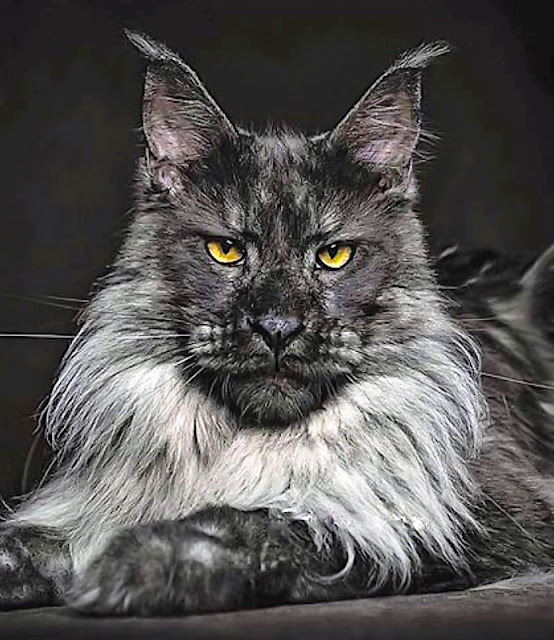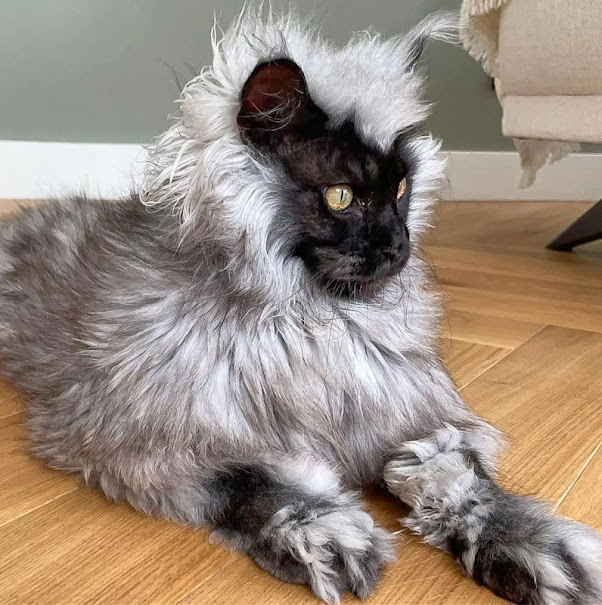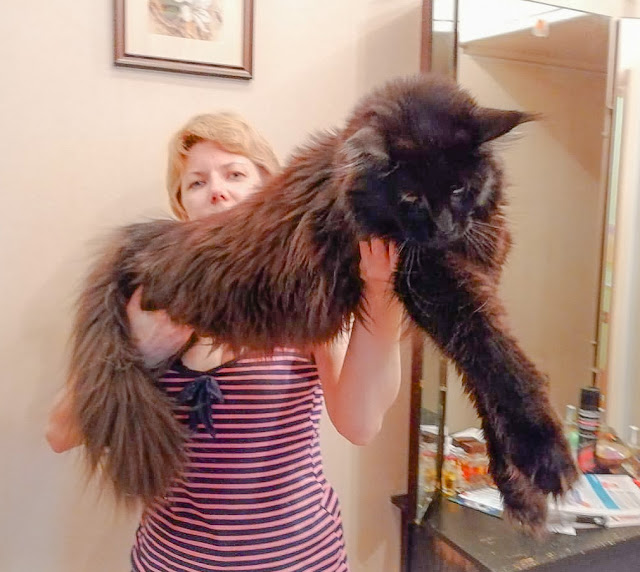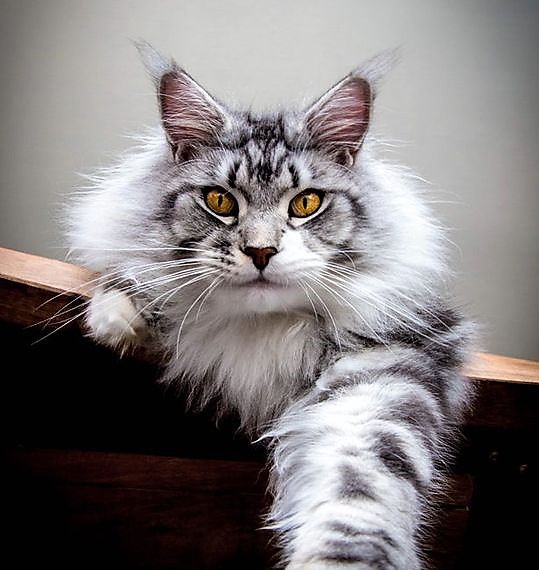Maine Coon purchaser should select a CFA or TICA registered breeder for this reason
 |
| TICA and CFA Maine Coon comparison. Photo: Helmi Flick. |
Initially I look at the breed standards regarding the coat from these two cat associations and then I discuss how it might impact the purchase.
TICA breed standard for Maine Coon coat
"Length: uneven; shorter on shoulders, gradually lengthening down the back and sides. Long, full, shaggy belly fur and britches. Tail fur long, full, flowing. Frontal ruff becomes more develop with age. Texture: all-weather coat. A slight undercoat gives the coat body but coat still falls smoothly. Not cottony."
CFA breed standard for Maine Coon coat
The CFA breed standard is shorter and contains an interesting slight difference:
"Coat: heavy and shaggy, shorter on the shoulders and longer on the stomach and britches. Frontal ruff desirable. Texture is silky with coat falling smoothly."
Difference
Note the word "silky" in the CFA standard. Years ago, I can remember being told by Helmi Flick, the professional cat photographer, that the Cat Fanciers' Association had a slightly different take on what a Maine Coon should look like which is reflected in their breed standard and which bears an interesting comparison to the breed standard of The International Cat Association.
TICA tends, I believe, to focus more on the "all-weather" nature of the Maine Coon cat coat. It should be functional and rugged as should the cat. This is a reflection of the breed's history in the state of Maine, USA. This is a state which is cold in the winter.
The CFA by contrast has drifted away slightly from those natural origins, I would argue, and pointed the breeders as a more refined Maine Coon appearance by introducing the word "silky" into the breed standard. It is not a word you would think would be applicable to the Maine Coon cat.
The word "silky" seems out of place in the breed standard for a cat which was a barn cat and is meant to be robust and substantial. The CFA makes it clear that this was originally a working cat and it should be "solid, rugged". They say that the breed is able to "endure a harsh climate".
With that kind of introduction, you wouldn't expect them to insert into the breed standard a guideline that the coat should be silky. And TICA don't do that. They focus on the functionality and practicality of a shaggy, long-haired code which can protect the cat under difficult climatic conditions.
Thinking behind the difference?
My thought is that the CFA have decided that the Maine Coon of 2023 should reflect modern life which is a far cry from the origins of the breed. This is a full-time indoor life essentially. TICA feel that the modern cat should retain its roots in terms of appearance as it is what helps to distinguish this breed from the others.
Interesting for adopters?
I think this is interesting for adopters. Should adopters - mainly first-time purchasers - approach a TICA registered breeder or a CFA registered breeder when purchasing their Maine Coon cat? There will be a difference.
If the adopter is more interested in a refined Maine Coon cat built for an indoor life, they should go to a breeder who is registered with the CFA. On the contrary, if they want their Maine Coon cat to reflect the origins of the breed and be a little more natural in appearance, they might decide to go to a TICA registered cat breeder.
This is just a thought and I don't expect TICA registered Maine Coons to be hugely different to CFA registered Maine Coons but I would expect there to be a slight difference nonetheless.










Comments
Post a Comment
Please share your Maine Coon experiences.